Warmer Homes Scotland: annual review 2017 to 2018
A review of how the Warmer Homes Scotland Scheme - part of the Home Energy Efficiency Programmes for Scotland - has performed and made progress towards meeting objectives.
Part 2: Objective 1 - Fuel Poverty
The first stated objective of Warmer Homes Scotland is to help to reduce levels of fuel poverty in Scotland by reducing the heating costs of those households who are living in or at risk of living in fuel poverty. Under the current definition of fuel poverty in Scotland a household is defined as fuel poor if, in order to maintain a satisfactory heating regime, it would be required to spend more than 10% of its income on all household fuel use.
Warmer Homes Scotland uses certain proxies to identify those households that are likely to be living in, or at risk of living in fuel poverty with the qualifying eligibility criteria for the scheme being based on factors that indicate the likelihood of a household being in fuel poverty such as age, income and disability.
Following the recommendations made in 2016 by the two fuel poverty working groups, Scottish Ministers appointed an independent panel of experts in early 2017 to review the current definition of fuel poverty in Scotland, to ensure that help is being targeted to those who need it most.
The Definition Review Panel's report was published in November 2017. To coincide with this report, the Scottish Government published a consultation on a new fuel poverty strategy including a proposed new definition of fuel poverty that was informed by the Review Panel's work. The consultation closed on 1 February 2018 and responses to this were used to help to inform policy development and the Fuel Poverty (Target, Definition and Strategy) (Scotland) Bill that was subsequently introduced to the Scottish Parliament on 28 June 2018[2].
Eligibility
This review examined the two main aspects of the eligibility criteria in order to
a. ensure that the criteria correctly identify fuel poor households; and
b. determine if households that can be considered to be in fuel poverty do not meet the qualifying criteria for the scheme?
Figures 3 and 4 show the numbers of customers who were referred to Warmer Homes Scotland during 2017/18, broken down by the primary benefit they were in receipt of at the time of qualifying for the scheme, and by age.
Figure 3 shows that the top three qualifying criteria for the scheme, in terms of volume, remain the same as in the 2016/17 operating year. The largest group of customers qualify for Warmer Homes Scotland based on their entitlement to Disability Living Allowance (DLA) or Personal Independence Payment (PIP) followed by those households supporting a child under 16 and in receipt of a qualifying benefit. The third largest group of customers are those over the age of 75 who are in receipt of a qualifying benefit.
Figure 3 - Primary Benefits of customers referred to Warmer Homes Scotland
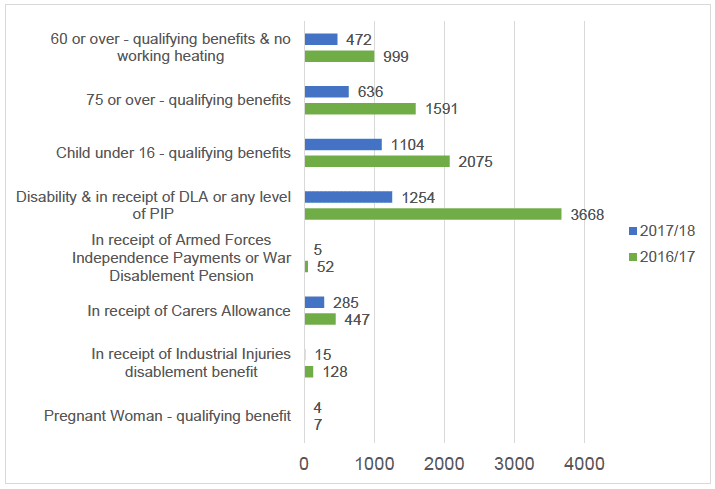
Figure 4 - Age Profile of Warmer Homes Scotland Customers
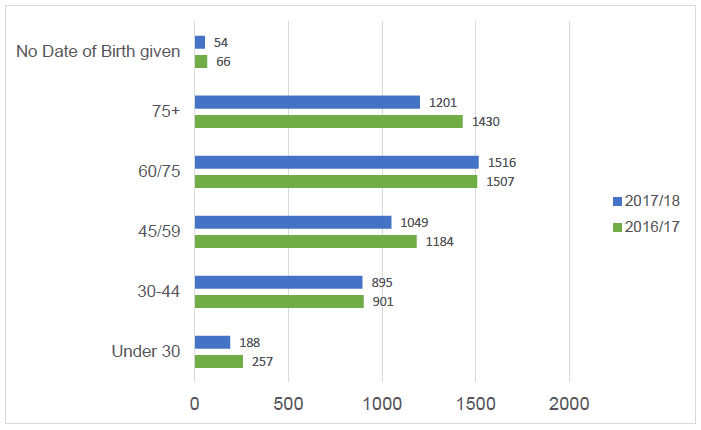
Analysis of Figure 3 demonstrates the breakdown of the primary benefits customers referred to the scheme are in receipt of and together with the age ranges demonstrated at Figure 4 this indicates that those individuals in receipt of Carer's Allowance, Industrial Injuries Disablement Benefit, War Disablement Pension, Armed Forces Independence Payment, and pregnant women have the lowest uptake of Warmer Homes Scotland. In addition, Figure 4 indicates that this is also true for those under the age of 30. As there are no figures available for the percentage of the population who are in receipt of these benefits in Scotland it is impossible to compare this group of Warmer Homes Scotland customers to the general population. The same is true for those households with all members under 30 who are living in fuel poverty.
During the period of this review a number of changes were made to the eligibility criteria for Warmer Homes Scotland to ensure that the funding available under the scheme is prioritised for those most in need. These changes are summarised below.
Private Rented Sector Properties
From 1 August 2017 tenants of landlords in the private rented sector with an existing heating system, with some exceptions for life tenancies, agricultural and crofting tenancies, were no longer eligible for heating measures. The reason for this is that these properties are covered by the Repairing Standard contained in the Housing (Scotland) Act 2006 which imposes a duty upon landlords to ensure installations for supplying water, gas and electricity and for sanitation, space heating and heating water must be in a reasonable state of repair and in proper working order.
Restricting qualification to those not in receipt of income-related benefits
From 1 September 2017 those applicants in receipt of the middle or lower rate of Disability Living Allowance (DLA) care or mobility components also have to be in receipt of an income related benefit to be eligible for assistance. DLA is not means tested and whilst there are many people in receipt of DLA who are also in receipt of other income related benefits such as Employment Support Allowance and who remain eligible, it is important that those that can afford to pay for energy efficiency measures to be installed in their homes should be encouraged to do so. There is other financial support available to this customer group, such as interest-free and equity release loans.
Increasing the age of customers who qualify for heating system repairs / replacement
From 1 September 2017, the age at which householders without working heating can access Warmer Homes Scotland was increased from 60 to the current State Pension age. This reflects the fact that many of those over 60 and under pension age are still in work and are likely to be able to afford to pay for energy efficiency measures to be installed in their homes. This change ensures that people who have retired and therefore are more likely to spend more time in their homes and who have no working heating system will still have access to Warmer Homes Scotland. However, they must also meet the other eligibility criteria.
Eligibility for Warmer Homes Scotland and HEEPS Area Based Schemes
From 1 September 2017 households are no longer able to benefit from both Warmer Homes Scotland and HEEPS: Area Based scheme funding. This helps to ensure that the maximum number of households benefit from the funding available from both schemes. Properties that have benefited from funding from either scheme are now excluded from funding from the other scheme for five years from the date the installation is completed.
Excluding some properties that fail to meet the Tolerable Standard.
From 1 September 2017 properties that do not meet the tolerable standard as set out in the Housing (Scotland) Act 2006 and where this will impact on the effectiveness of the measures recommended for installation are no longer eligible for Warmer Homes Scotland.
Referral data.
Referral data from 1 September 2017 to 31 March 2018 has been compared to data from the same period in 2016/17 to establish if these changes to the eligibility criteria in terms of restricting eligibility to those on income related benefits and increasing the age of customers who qualify for heating system repairs/replacement in particular, has impacted on referral numbers.
Figure 5 demonstrates that restricting eligibility to those households not in receipt of income related benefits and increasing the age of customers who qualify for the scheme has contributed to an 31.43% reduction (overall average 24.3% decrease between the period of comparison) in callers to Home Energy Scotland who were referred to Warmer Homes Scotland. This suggests that restricting the eligibility criteria for these particular two groups of individuals may have resulted in a reduction in referrals, allowing the limited budget for the scheme to be targeted to those households most in need of help. However, the reduction in referral numbers may also be attributable to no national marketing campaign having been undertaken during 2017/18. During 2016/7 a national marketing campaign was undertaken to increase both awareness of the scheme and demand. Referral numbers will be kept under review during 2018/19 to establish if a lack of marketing results in a continued downward trend.
Figure 5 - Comparison of Warmer Homes Scotland referrals in 2016/17 and 2017/18 following changes to eligibility criteria
| Month | 2016/17 | 2017/18 | % Decrease in referrals to WHS |
|---|---|---|---|
| September | 642 | 580 | -9.7% |
| October | 778 | 571 | -26.6% |
| November | 1208 | 743 | -38.5% |
| December | 738 | 412 | -44.2% |
| January | 768 | 628 | -18.2% |
| February | 895 | 553 | -38.2% |
| March | 896 | 576 | -35.7% |
| Total | 5925 | 4063 | Average % decrease 24.3% |
The 2017 Scottish Housing Conditions survey (SHCS) outlines the key features of the fuel poor population in Scotland in 2017. This indicates that, of the households living in fuel poverty, around 11% are families with children, 51% are older one or two person households and 37% are other types of households with adult residents. In terms of housing tenure, 57% of fuel poor households are owner-occupiers, 28% are social housing residents and 16% private sector tenants.
This survey also showed that fuel poverty has a strong association with income and households with lower incomes have the highest rates of fuel poverty, 88% of households with an income of less than £200 per week were fuel poor compared to only 2% of those households with an income of over £700 per week.
These are the highest and lowest income bands used in the survey. However, while low income is associated with fuel poverty, it is not equivalent.
The SHCS, using an equivalised weekly income poverty threshold of £313 (before housing costs)[3] estimates 63% of all fuel poor households would be considered income poor, while almost 4 in 10 fuel poor households would not be considered income poor.
Similarly, there are some income poor households who are unlikely to be struggling with their fuel bills, with around 3 in 10 income poor households not being fuel poor.
During 2017/18 Warmer Homes Scotland has delivered an average fuel bill saving of £318 per household, a decrease of 11% from the average fuel bill saving of £357 in 2016/17.
The average fuel bill savings are calculated by undertaking a whole house Green Deal Assessment (GDA) which are comprised of two elements - the standard Energy Performance Certificate (EPC), which determines the SAP rating of the home, and an Occupancy Assessment (OA), which takes lifestyle factors and household behaviours into account. This forms the basis of the recommendations made to the householder in terms of the measures that are recommended and installed under the scheme. Once all measures have been installed and successfully inspected, another EPC is then carried out to determine the new SAP rating of the property. Using the same software platform, the improvements in the SAP rating of the property are used to model the potential cost savings that a household might expect to gain as a result of the improvements made. However, it should be noted that these are modelled savings based on the underlying methodology of the software platform; no adjustment is made for householders taking some benefit in comfort and living in a warmer, healthier home. However, the modelled savings are still driven by industry-recognised processes and will always provide a guide as to the potential cost savings that householders can achieve.
The 11% reduction in fuel bill savings in 2017/18 may be due to a number of factors including a 20.4% increase in the installation of energy efficient glazing and doors in 2017/18. Whilst these measures do not usually result in a significant increase to the SAP scores of a property, for the purposes of calculating the average fuel bill savings, they do considerably reduce draughts resulting in warmer and more affordable to heat properties.
The findings of the SHCS 2017 when compared to Figure 3 shows that the use of proxies in determining eligibility for Warmer Homes Scotland is continuing to target support to those households who are most likely to be in fuel poverty.
The households with the largest uptake of Warmer Homes Scotland are those that have a member who has a disability, followed by households who are supporting young children or an older person aged 75 or over.
This evidence supports the use of proxies in identifying those households who are at most risk of living in fuel poverty and which may benefit most from the scheme. However, as DLA and PIP are not means-tested benefits it cannot be concluded that the scheme is supporting only low-income households, although, it must be noted that customers in receipt of DLA may also be in receipt of other income-related benefits and this will not be reflected in these figures as Home Energy Scotland only records the primary qualifying benefit of customers referred to the scheme.
The figures for the tenure types for Warmer Homes Scotland customers show that the majority (82.1%) with completed installations are owner-occupiers. This may reflect that social housing tenants are not eligible for the scheme and the private landlord's obligations under the Repairing Standard. This places a duty on to landlords in the Private Rental Sector (PRS) to ensure that heating in their properties is in good working order and in a reasonable state of repair.
Table 1 - Warmer Homes Scotland completed installations by tenure type
| Year | Owner-occupied | % of Total | Rented (private) | % of Total | Total |
|---|---|---|---|---|---|
| 2015-16 | 1159 | 83.5 | 213 | 15.5 | 1372 |
| 2016-17 | 4329 | 81 | 1025 | 19 | 5354 |
| 2017-18 | 4055 | 82.7 | 848 | 17.3 | 4903 |
| Total | 9543 | 82.1 | 2086 | 17.9 | 11,629 |
Whilst, evidence suggests that the current eligibility criteria appears to capture those households living in or at risk of fuel poverty, these households might not strictly adhere to the current definition of fuel poverty in Scotland that specifically refers to income. There may be low-income households living in fuel poverty who currently do not qualify for Warmer Homes Scotland because they are not in receipt of one of the qualifying benefits.
The proposed use of the UK Minimum Income Standard in the measurement of fuel poverty as set out in the Fuel Poverty (Target, Definition and Strategy) Scotland Bill will help to improve the alignment between fuel poverty and income poverty.
Under the proposed new definition of fuel poverty, those households that may not be income poor, but struggle to pay their fuel bills and maintain an adequate standard of living, will be captured.
The number of households that the scheme can help is limited by the available budget. Although the eligibility criteria for the scheme was revised during 2017/18, demand exceeded the budget available at the start of the financial year.
Additional funding was identified and the budget was increased from £19 million to £27 million and this allowed more than 1,500 additional households to benefit from the scheme.
Table 2 shows that, during 2017/18, 761 applications were cancelled post-referral because they did not meet the eligibility criteria. The vast majority of these cancellations (93%) were due either to the SAP rating of the property being too high to qualify, or that there were no suitable measures identified during the survey process that would improve the energy efficiency of the property.
Following the 2015/16 Annual Review of Warmer Homes Scotland, the qualifying SAP threshold was increased from 55 to 65. From Table 2 we can see that during 2017/18 the percentage of ineligible households that did not qualify post-referral due to the SAP rating being too high was 40.1% when compared to 47.5% in 2016/17. This demonstrates a 7.4%% decrease in percentage terms and a decrease of 88 in the number of households when compared to 2016/17.
The suitability of available measures is examined in more detail in Part 4 of this review.
Table 2 - Reasons Customers did not Qualify Post Referral
| Reason | 2017/18 | 2016/17 | ||
|---|---|---|---|---|
| No. | % of Total | No. | % of Total | |
| Applicant Less than 1 Year at Property | 12 | 1.6 | 55 | 6.7 |
| Applicant Not of Eligible Age and No Eligible Children | 2 | 0.3 | 3 | 0.4 |
| Applicant Not on Benefits | 15 | 1.9 | 31 | 3.6 |
| Applicant Proofs Missing | 10 | 1.3 | 7 | 0.9 |
| Property Housing Association/(Council Tenant) | 7 | 0.9 | 7 | 0.9 |
| Commercial Property | 0 | 0 | 1 | 0.1 |
| Multi-occupancy property | 0 | 0 | 1 | 0.1 |
| SAP - Too high | 305 | 40.1 | 393 | 47.5 |
| SAP Qualifies but no suitable measures | 410 | 53.9 | 329 | 39.7 |
| Total | 761 | 100 | 828 | 100 |
It is recognised that households in remote and rural areas that are not connected to the gas grid can have higher fuel costs than those households connected to the gas grid and those households living in urban areas. Consequently, under the current definition of fuel poverty in Scotland households in remote or rural areas are more likely to be living in or at risk of living in fuel poverty
Therefore, it would be expected that the uptake of Warmer Homes Scotland would be proportionately greater in these areas.
Table 3 - Number of completed installations by region
| Region | Warmer Homes Scotland Completed installations | Population (mid 2016) | Installs per 1,000 People |
|---|---|---|---|
| Islands | 335 | 71,950 | 4.66 |
| Highlands | 419 | 321,900 | 1.30 |
| North East | 791 | 1,003,570 | 0.79 |
| South West | 532 | 520,080 | 1.02 |
| South East | 1027 | 1,364,860 | 0.75 |
| Strathclyde and Central | 1799 | 2,122,340 | 0.85 |
| Scotland Total | 4903 | 5,404,700 | 1.10 |
Analysis of installations completed under Warmer Homes Scotland in 2017/18, indicates that uptake per head of population was greater in rural areas than in urban areas. Warmer Homes Scotland is designed to ensure people living in rural areas have equal access to the same measures as households living in urban areas despite the higher costs of installing these measures in remote, and rural areas. Analysis of installation in 2017/18 indicates that uptake per head of population was greater in rural areas than in urban areas.
Table 3 indicates that installs per 1,000 population was over four times the national average in the Islands region.
Figure 6 shows a map of Warmer Homes Scotland installations in 2017/18 and Figure 7 shows maps of postcodes with a gas supply.
Figure 6 - Map of Warmworks Installations in 2017/18
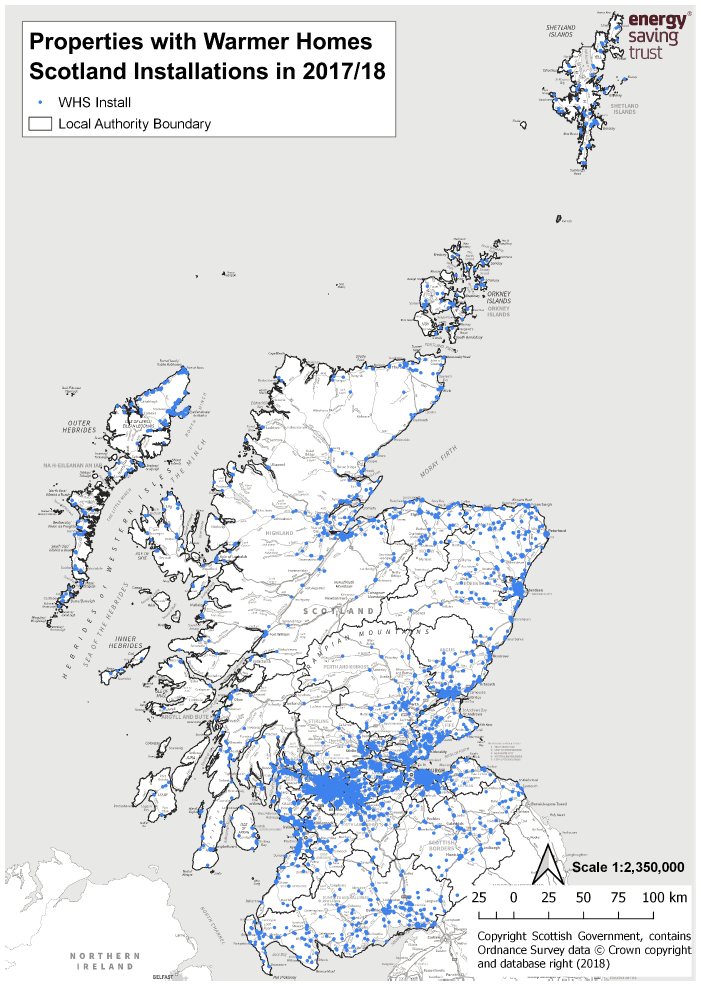
Figure 7 - Map of Postcodes with Gas Supply
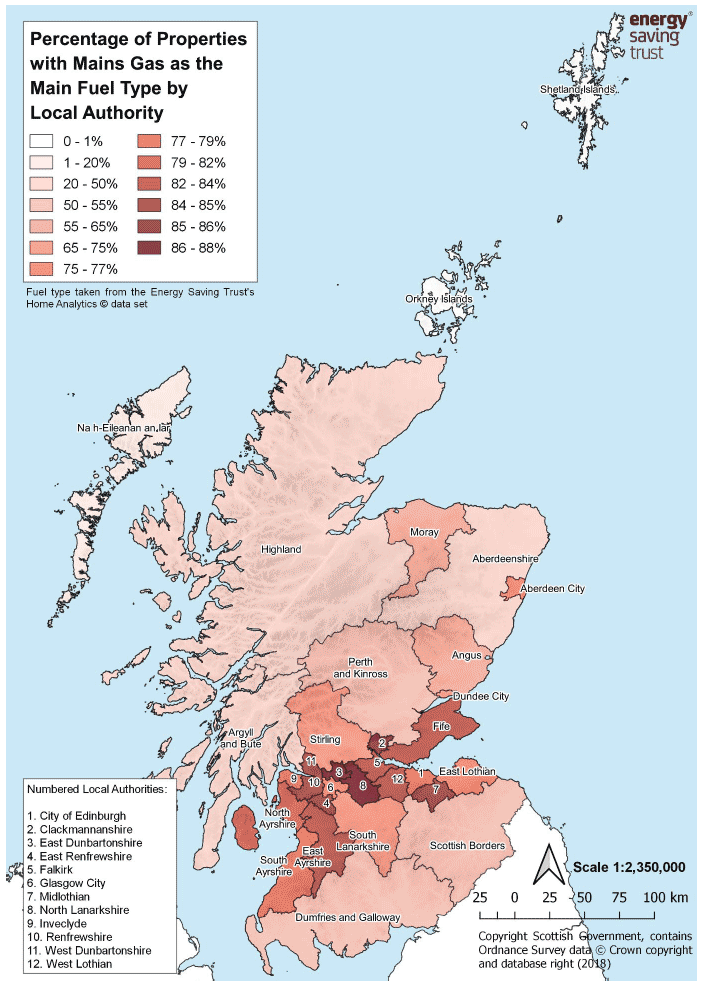
Awareness
Public awareness of Warmer Homes Scotland is important to ensure that the scheme reaches those households living in or at risk of fuel poverty and, to ensure that these households are aware of the benefits of having measures installed under the scheme. Although a national marketing campaign for the scheme was not undertaken during 2017/18, Home Energy Scotland continue to promote referrals to Warmer Homes Scotland through their wide ranging partnership activity.
Figure 8 - Number of calls (weekly) to HES compared to Warmer Homes Scotland Referrals and the linear trends 2017/18
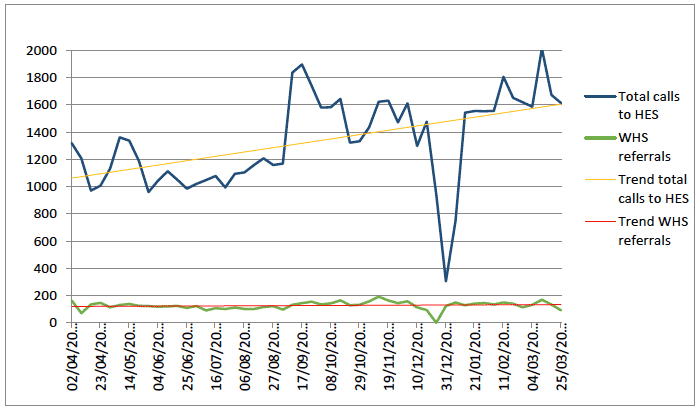
Despite the fluctuations in the number of calls to the HES helpline, as shown in Figure 8, the average number of referrals to Warmer Homes Scotland remained steady throughout 2017/18.
Figure 9 shows the Warmer Homes Scotland referral levels in more detail. The average number of monthly Warmer Homes Scotland referrals remained steady throughout the review period with the expected dips in referral numbers during the summer months and over the Christmas and New Year period.
Figure 9 - Graph showing the average number of weekly referrals and the trend for referrals to Warmer Homes Scotland in 2017/18.
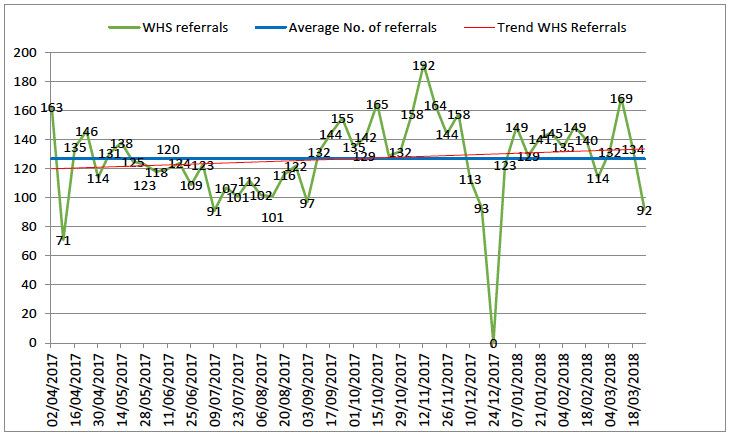
Attractiveness
The third element of accessibility of Warmer Homes Scotland is the attractiveness of the scheme to those households who are most in need of help. This can be further broken down into two strands:
a. Encouraging a customer to take up a referral to Warmer Homes Scotland; and
b. Ensuring that once referred, they want to complete their customer journey.
Once a customer has contacted Home Energy Scotland, has gone through the initial screening process and is found to be eligible to apply for assistance from Warmer Homes Scotland, they are referred by Home Energy Scotland to Warmworks and a survey of their property is booked. When Warmworks receive a referral, they are then responsible for the management of the end-to-end customer journey as shown at Figure 10.
The customer journey process had remained substantively the same since Warmer Homes Scotland was launched in September 2015.
During 2018/19, consideration will be given to a customer journey audit, including discussions with Warmer Homes Scotland customers being carried out by to ensure that the customer journey continues to meet the needs of scheme and its customers and. The customer journey audit will be carried out during the 2019/20 financial year.
Recommendation 1 - Review of the Warmer Homes Scotland customer journey from the customer being referred to Warmworks through to the completion of the annual service visit (where required) to ensure that the full end-to-end customer journey process remains fit for purpose and meets the needs of households referred to the scheme.
Figure 10 - Warmworks Customer Journey
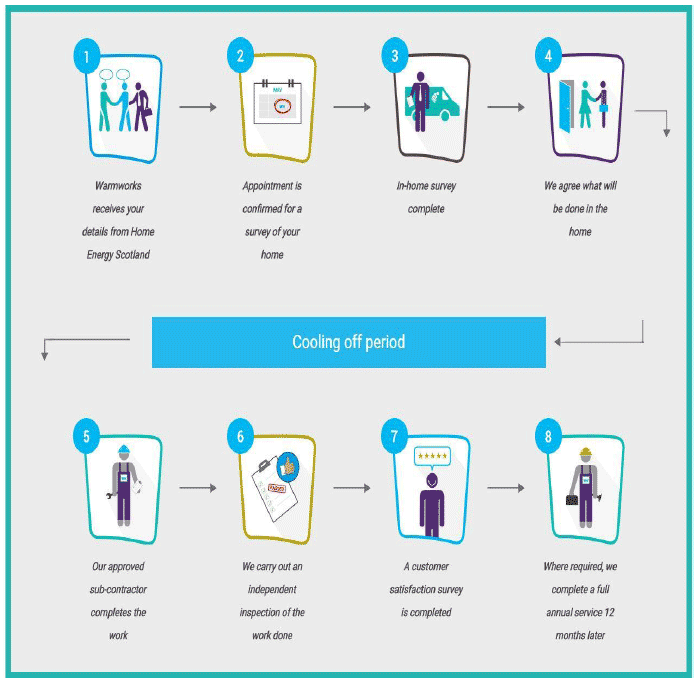
In 2017/18 a total of 1484 customers cancelled their application to Warmer Homes Scotland. While this is a marked decrease on the actual number of cancelled applications from 2016/17, proportionately this was a decrease from 38% of completed households in 2016/17 to 30% of completed households in 2017/18.
Table 4 - Reasons customers cancelled their Warmer Homes Scotland application
| Cancellation reason | 2016/17 | 2017/18 | ||
|---|---|---|---|---|
| Number of Cancellations 16/17 | % of Cancellations 16/17 | Number of Cancellations 17/18 | % of Cancellations 17/18 | |
| Applicant - Due to Contribution | 36 | 1.8 | 22 | 1.5 |
| Applicant Cancelled - Upheaval/Preparation works required | 311 | 15.4 | 226 | 15.2 |
| Applicant Deceased | 13 | 0.6 | 12 | 0.8 |
| Applicant Illness | 92 | 4.6 | 100 | 6.7 |
| Applicant Moving House | 44 | 2.2 | 27 | 1.8 |
| Applicant No Longer Interested (Fuel/Measure Choice) | 488 | 24 | 447 | 30.1 |
| Applicant Not Able To Proceed At This Time | 16 | 0.8 | 0 | 0 |
| Applicant Not Interested (Other) | 16 | 0.8 | 0 | 0 |
| Applicant out-with timescales | 578 | 28.6 | 379 | 25.5 |
| Applicant Private Install | 57 | 2.8 | 43 | 2.9 |
| Asbestos | 4 | 0.2 | 7 | 0.5 |
| Duplication | 52 | 2.6 | 28 | 1.9 |
| LLP (Landlord refused Works or No Contact) | 135 | 6.9 | 17 | 1.1 |
| No Access (Survey) | 23 | 1.1 | 4 | 0.3 |
| Unable to Contact | 150 | 7.4 | 172 | 11.6 |
| Unknown | 4 | 0.2 | 0 | 0 |
| Total | 2019 | 1484 | ||
During 2017/18 there was an overall 26.5% reduction in customers cancelling their application when compared to the number of cancelled applications in 2016/17. This represents a reduction of 535 customers cancelling their applications in 2017/18.
When cancelled applications are compared to the overall number of completed installations in 2017/18 (4903), 30.3% of customers referred to Warmer Homes Scotland cancelled their application in comparison to 38% of customers in 2016/17 (5326 completed installations).
The most common reason that customers cancelled their application during 2017/18 was because they were no longer interested in proceeding due to either the fuel type or the measures recommended when the initial survey of the property was carried out.
Table 4 Indicates that actual number of customers who cancelled their application because they were no longer interested in proceeding decreased from 488 in 2016/17 to 447 in 2017/18. When expressed as a percentage of completed applications this has fallen 0.1% from 9.2% in 2016/17 to 9.1% in 2017/18.
It is anticipated that new renewable measures will be introduced to the scheme during 2018/19, and these will provide a greater choice of available heating measures, in particular to those households living in off gas areas. This may result in a decrease in the numbers of customers cancelling their applications in the future due to unsuitable fuel types or measures.
The second most common reason for cancelled applications is that they were out-with the timescales of the process. In March 2017, the contract was amended by means of a CVN to add five additional categories of "allowed Pause Periods" with the intention of reducing the number of applications cancelled because they were out-with the Referral to Completion (RTC) timescale.
The impact of the introduction of this CVN is that the actual number of applications cancelled for this reason decreased from 578 in 2016/17 to 379 in 2017/18. When expressed as a percentage of completed applications this has fallen 3.3% from 11% in 2016/17 to 7.7% in 2017/18.
The third most common reason for customers to cancel their application was the perceived upheaval and/or the need for preparation works to the property in advance of an installation. The actual number of customers who cancelled their application for this reason decreased from 311 in 2016/17 to 226 in 2017/18. When expressed as a percentage of completed applications this has fallen 1.4% from 6% in 2016/17 to 4.6% in 2017/18.
This decrease in cancellations may be attributable to Warmworks being successful at leveraging in additional financial support into the scheme during 2017/18 to support customers with enabling measures, in advance of an installation. Part 5 of this review looks at this additional support and how Warmer Homes Scotland continues to deliver value for money.
As a result of the findings of the 2016/17 Annual Review additional enabling measures including asbestos removal and the replacement of old oil storage tanks will be considered with a view to adding these to the Warmer Homes Scotland offer in 2018/19 with the intention to further reducing the number of customers cancelling their application due to the perceived upheaval and/or the need for preparation works.
The Warmworks customer satisfaction scores against the volume of survey returns in 2017/18 are demonstrated at Figure 11. This shows that customer satisfaction levels for those customers who remained in the customer journey process is very high with 99% of customers who completed the survey advising they were satisfied or very satisfied with the overall service received during their Warmer Homes Scotland customer journey. This figure is based on a 77% return rate for completed customer satisfaction surveys. This high level of customer satisfaction indicates that Warmer Homes Scotland customers are happy with the levels of service they receive from Warmworks during their customer journey.
During 2017/18, Warmworks received a total of 198 complaints and this was confirmed by Pennington Choices through the audit process. Warmworks upheld 78 (39.4%) of the complaints received.
During 2017/18, the actual number of complaints increased from 165 received in 2016/17 to 198 in 2017/18. When expressed as a percentage of completed applications the number of complaints, this demonstrates a minimal 1% increase from 3% in 2016/17 to 4% in 2018/19.
The number of upheld complaints decreased from 87 in 2016/17 to 78 in 2017/18. When expressed as a percentage of completed applications in 2016/17 and 2017/18 this remains the same at 1.6% for both reporting years.
These figures reinforce the high customer satisfaction rating Warmworks received during 2017/18 and the efforts Warmworks have made to keep improving their standard of service. Although these figures indicate that a very small number of installations, when compared to completed installations, have not been delivered to the standard expected, 99% of Warmer Homes Scotland customers were satisfied or very satisfied with the level of service they received during 2017/18. Going forward Warmworks will continue to monitor their customer satisfaction scores to maintain the high standard of service they provide, with the expectation that the number of installations not delivered to the standard expected and the number of complaints received will be further reduced during the course of the 2018/19 reporting year.
Figure 11 - Customer Satisfaction Scores
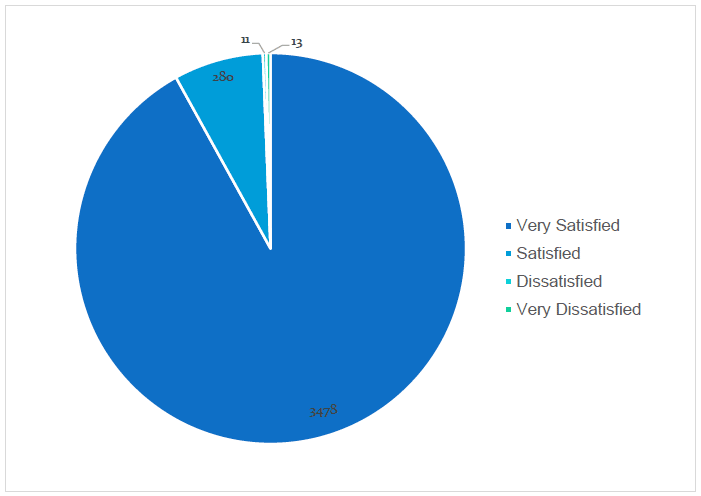
The evidence presented indicates that Warmer Homes Scotland is an attractive option for customers. However, more may need to be done to ensure eligible customers take up the offer of support available from the scheme and complete their customer journey. The high customer satisfaction score of 99% achieved by Warmworks during 2017/18 may generate additional referrals to the scheme as a result of satisfied customers using word of mouth to promote a positive experience and reputation for the scheme.
Recommendation 2 - It is anticipated that additional renewable measures and an enhanced offer of additional enabling measures will be introduced to Warmer Homes Scotland during 2018/19, following their introduction, review the impact on cancellation rates, in particular the rates of customer cancellations due to fuel type, no suitable measures or perceived upheaval and/or preparations works to the property.
Contact
Email: CEU@gov.scot
There is a problem
Thanks for your feedback